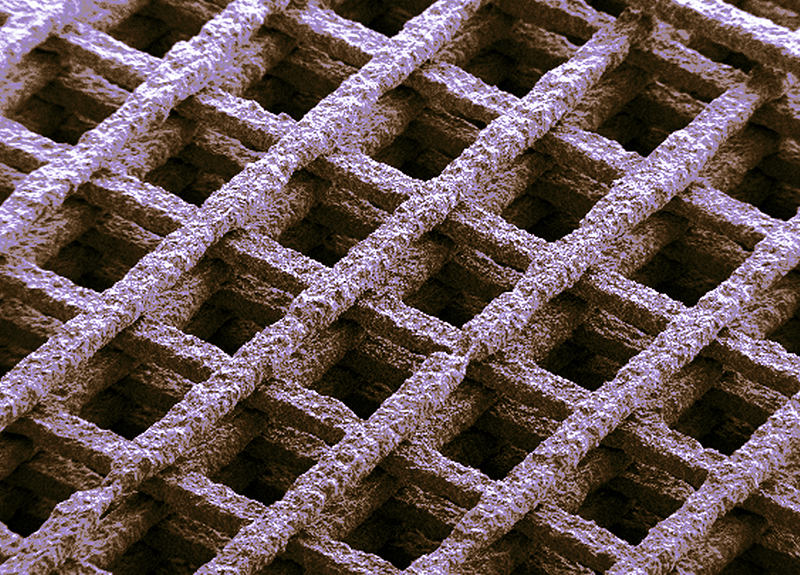This article began as a class assignment for ISEN 495, a graduate-level science writing course offered by the Institute for Sustainability and Energy at Northwestern (ISEN) that focuses on communicating science beyond academia. Article originally published in HELIX Magazine, produced by Science in Society, a Northwestern University research center dedicated to science outreach and public engagement.
They are concealed at the tip of your pencil. They linger in the lubricant in your car. They have been hiding in plain sight your entire life. Two-dimensional materials – a newly discovered class of super-thin materials – are all around us, but only recently have we discovered their incredible potential.
Inside your pencils and car lubricants are materials made up of lots of layers. As your pencil glides across paper, it leaves behind a trail of graphite, peeling away more layers with each stroke. If you removed just a single layer, (alas, not something you’re likely to achieve at home) you would be left with an extremely thin material that is only one atom thick. That’s a two-dimensional, or 2D, material.
Imagine a normal, layered 3D material like pencil graphite is a stack of paper. Each individual sheet of paper represents one 2D layer of the material. If you remove just a single sheet, the structure is very thin and flat. (The difference is that a layer of 2D material is much thinner than your sheet of paper – 150,000 times thinner.) We have been using the 3D versions of these materials (the whole stack of paper) for decades. Until recently, many scientists actually thought it would be impossible to separate a single 2D layer from the whole stack.
Then in 2004, the British scientists Andre Geim and Kostya Novoselov decided to try. They used Scotch tape (the same stuff you wrap presents with) to painstakingly peel apart a piece of graphite until only an atom-thick piece of carbon remained. They had successfully isolated the first 2D material: graphene. Not only was it possible to isolate a single layer, but this individual layer of graphene has some amazing properties totally unique from its bulk counterpart. Unlocking these new properties in graphene earned these scientists the Nobel Prize in Physics in 2010.
Inspired by the promise of graphene, scientists have since discovered several other 2D materials – and have evidence that hundreds more could exist. Some are two to three atoms thick instead of one – but they are all still much thinner than any other material. The super-thin crystal structure of 2D materials leads to a variety of new and unique properties. Those currently being researched (including graphene, hexagonal boron nitride, and the transition metal dichalcogenides) share some common traits – including their function in electronic devices. But their usefulness extends far beyond standard electronics. Here are a few of the many reasons these materials might be flat in structure, but are far from boring.
1. 2D materials are super strong.
2D materials are only a few atoms thick, but between those atoms are bonds that hold them together very tightly. These bonds are so strong, in fact, that graphene is reported to be 200 times stronger than steel. These lightweight yet strong materials could revolutionize designs for lighter, faster, more fuel-efficient planes and cars of the future.
2. 2D materials are highly flexible.
The super-thin nature of 2D materials leads to another important property: flexibility. Being so thin and strong, they can bend far without breaking, and they can stretch, too. This flexibility is a highly unusual property for electronic materials. Think about your rigid cell phone. If you fold it in half, the screen would shatter and all the electronics inside would be rendered useless. Graphene, on the other hand, can be stretched up to 20% without breaking. This flexibility opens the door to all sorts of flexible electronics in the future, such as roll-up computers that fit in your pocket and wearable electronics to monitor athletic performance and medical conditions.
3. 2D materials are transparent.
Clear materials – like plastic or glass – generally do not conduct electricity well. But 2D materials, many of which are semiconductors or conductors, break this rule. Because they are so thin, there simply isn’t much there for light to interact with, making 2D materials almost completely transparent to visible light. In fact, the leading 2D materials absorb less light than typical window glass. Transparency combined with the other 2D material properties could create a wide range of transparent screens, like a TV built into your window or a car windshield that doubles as your GPS.
Each of these properties individually – strength, flexibility, and transparency – are valuable, but the fact that they all can be utilized in electronic devices makes 2D materials truly exceptional. No other materials are invisibly clear, exceptionally bendy, amazingly strong, AND can power your laptop. This unique combination of properties could open up a whole new array of devices and applications that have yet to be invented. So next time you write with that good old-fashioned pencil, imagine all the futuristic potential of the 2D layers hidden inside.



